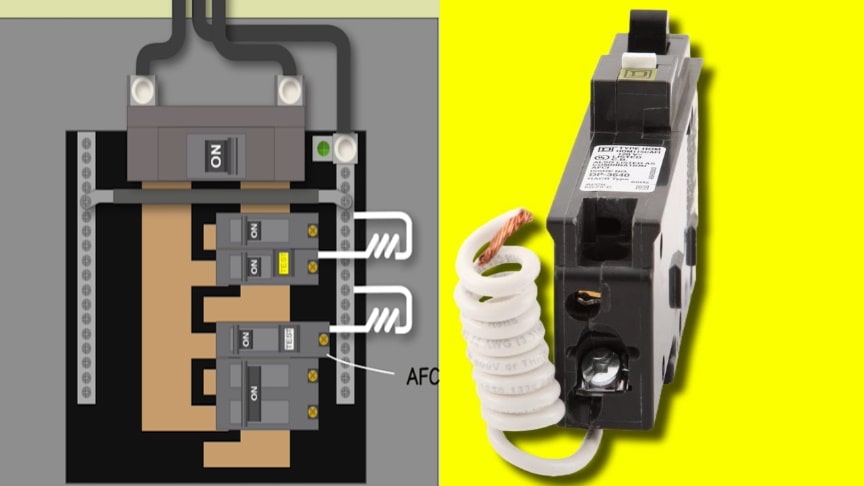An arc-fault circuit interrupter is a circuit breaker that breaks the circuit when it detects the electric arcs that are a signature of loose connections in home wiring. An AFCI selectively distinguishes between a harmless arc (incidental to normal operation of switches, plugs, and brushed motors), and a potentially dangerous arc that can occur, for example, in a lamp cord which has a broken conductor.
source/image: The Engineering Mindset
The electronics inside an AFCI breaker detect electrical current alternating at characteristic frequencies, usually around 100 kHz, known to be associated with wire arcing, which are sustained for more than a few milliseconds.
A combination AFCI breaker provides protection against parallel arcing (line to neutral), series arcing (a loose, broken, or otherwise high resistance segment in a single line), ground arcing (from line or neutral to ground), overload, and short circuit. The AFCI will open the circuit if dangerous arcing is detected.
Advertisement
When installed as the first outlet on a branch circuit, AFCI receptacles provide series arc protection for the entire branch circuit. They also provide parallel arc protection for the branch circuit starting at the AFCI receptacle. Unlike AFCI breakers, AFCI receptacles may be used on any wiring system regardless of the panel.











